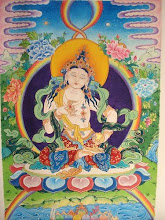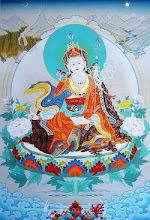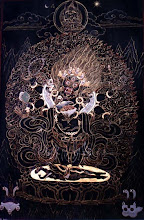The weekend's been rather quiet, at least in so far as I've kept my scheduled activities to a manageable few. Saturday evening I attended a small concert of classical music and dance, performed by artists the promoter described as middle rank but who nonetheless gave top-rank performances.



On Sunday morning I went down to the river and watched the people, which on this weekly holiday included many families out for a ritual bathe in the Ganges. Later in the morning I visited the
Kabir Temple and was shown around by a PhD student in Sanskrit at Benares Hindu University and a member of the ashram since the age of eight.
 This lovely 9th grader (her father looking over her shoulder) politely asked if she could talk with me and practice her English.
This lovely 9th grader (her father looking over her shoulder) politely asked if she could talk with me and practice her English.



Today was mostly business, but what an adventure. The rickshaw driver dropped me at the wrong post office, but that turned out to be not such a huge problem as the one I needed to visit was only a 15 minute walk away. I hadn't packaged anything as I was waiting until I got to the PO to find out what the regulations are. No pre-packing inspection was required, but I found that like in some other countries no packaging services or products were available, except the one I'll describe below, and no stationery shops nearby.
So first thing I had to do was hunt up a box at one of the street-side stalls around the PO, little shops selling mostly clothing, but also a few packaged-food dealers. One of them spotted me and asked if I was looking for a box. He must have seen scavenging foreigners before. He went through a bunch of boxes to find something suitable, for which he asked 50rps, about $1.00. I have him 10.
Then I had to find was some old newspaper for stuffing, which sounds pretty easy, but I had to ask at about half a dozen places. In the meantime, a tea wholesaler offered me complimentary tea. Finally, I found a small general goods shop and was able to buy some packing tape.
I took all this with me to the packaging shop, which was at the time full. I sat outside in the dusty street with all the traffic under a warm sun and got everything snugly and firmly packed. By then the shop had opened up and I could get out of the sun while my box was wrapped in cotton cloth and sewn shut. I asked why this was done.
The man said, This is the way of India.
I understand that. But the question is, Why is this the way of India?
You'll have to ask at the post office, he said.





I never got around to asking that question because as usual in India there are lots of people around, its very noisy, and its an effort just to keep focused on the immediate matter. Fortunately, there was an assistant working the counter, a helper, a fixer, a non-postal employee who spoke English and for a bit of baksheesh took me behind the counter away from the crowds, instructed me in how to fill out the appropriate forms, and took me direct to the man to whom I paid for my shipping. He was a short-statured, bald, betel nut chewing angel from heaven.
I also had to seal and stamp 20 greeting cards and altogether spent two hours at the post office. By then I was feeling a headache coming on. I suppose I thought I could escape to a climate controlled environment, which turned out to be another false expectation, so I hopped a tuk-tuk to the IP Mall, the city's American-style shopping center, complete with a cinema complex and a McDonald's.
Curious about the latter in cow-worshiping India, I walked in to have a look at the menu and found much to my delight the featured item a veggie burger. I plunked down 109rps, about $2.30, for a meal including fries and a cola, an experience not worth repeating. The burger was essentially what we call in Japan a korokke, known elsewhere as a croquette, with the standard lettuce, tomato, cheese and mayo.


 Kareena, Kareena, everywhere
Kareena, Kareena, everywhere
I walked around the mall and found a watch shop with a 30-50% sale on. Having nothing but a crappy $20.00 Chinese chrono I bought while on pilgrimage in Shikoku, I thought I'd splurge for a model with a double display (analog and digital, one for local, one for my sweety in Japan) and so bought a crappy $30.00
Indian watch from the Tata group.
 Hanging out with my new specs
Hanging out with my new specs
The mall turned out to be anything but soothing. The climate was in fact controlled, but like most every where else in town the noise was uncomfortable, in this case a stereo with the bass turned up to maximum thumping up and down all three levels.
 If there is nothing else in the day to celebrate, there's always the food.
If there is nothing else in the day to celebrate, there's always the food. #

















































































